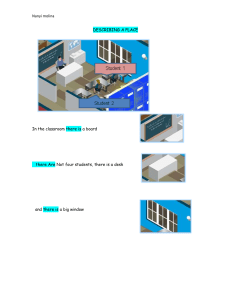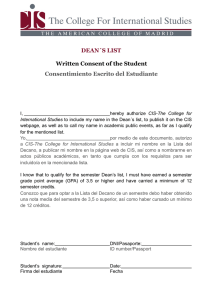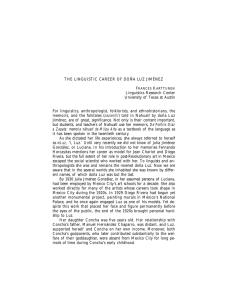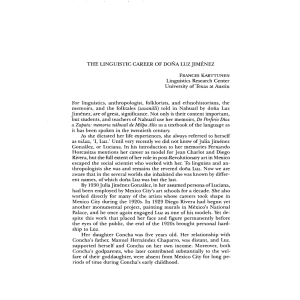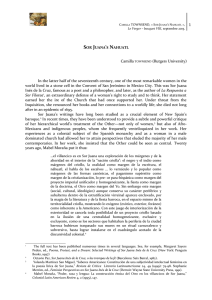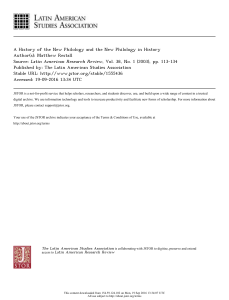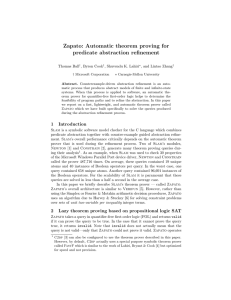NAHUATL NAMES FOR BODY PARTS by CHARLES E. DIBBLE
Anuncio
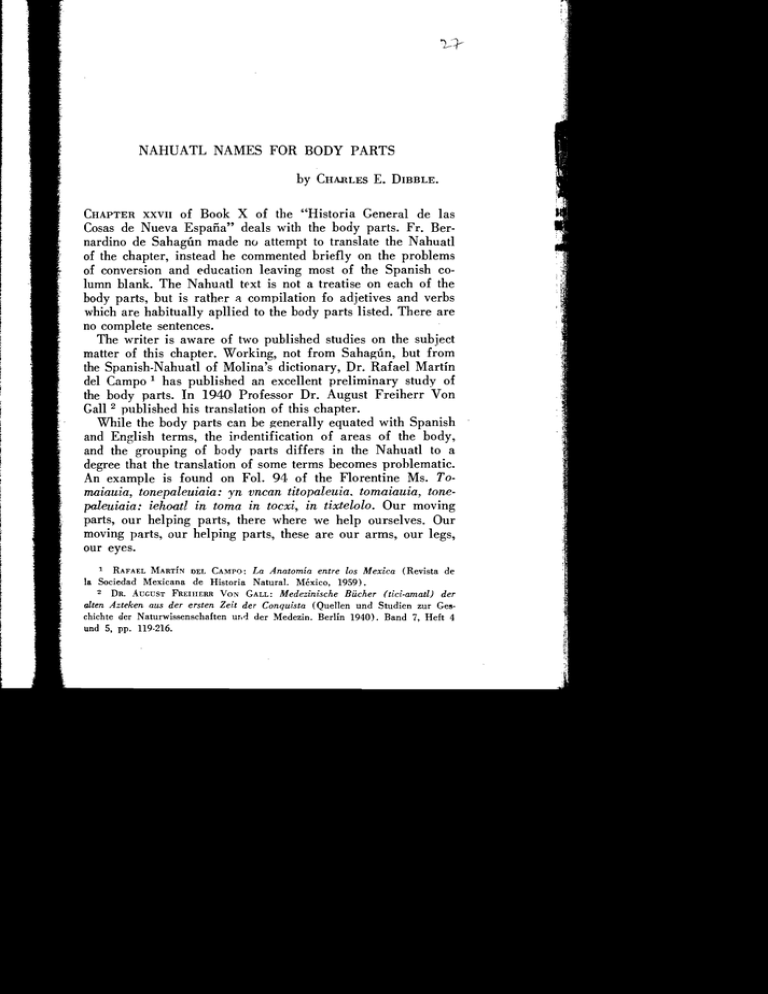
NAHUATL NAMES FOR BODY PARTS by CHARLES E. DIBBLE. CHAPTER XXVII of Book X of the "Historia General de las Cosas de Nueva España" deals with the body parts. Fr. Ber­ nardino de Sahagún made no attempt to translate the Nahuatl of the chapter, instead he commented briefly on the problems of conversion and education leaving most of the Spanish co­ lumn blank. The Nahuatl text is not a treatise on each of the body parts, but is rather a compilation fo adjetives and verbs which are habitually apllied to the body parts listed. Tbere are no complete sentences. Tbe writer is aware of two published studies on the subject matter of this chapter. Working, not from Sahagún, but from the Spanish-Nahuatl of Molina's dictionary, Dr. Rafael Martín del Campo 1 has published an excellent preliminary study of the body parts. In 1940 Professor Dr. August Freiherr Von Call 2 published his translation oí this chapter. While the body parts can be generally equated with Spanish and English terms, the ipdentification of areas of the body, and the grouping of body parts differs in the Nahuatl to a degree that the translation of sorne terms becomes problematic. An example is found on Fol. 94 of the Florentine Ms. To­ maiauia, tonepaleuiaia: yn vncan titopaleuia. tomaiauia, tone­ paleuiaia: iehoatl in toma in tocxi, in tixtelolo. Our moving parts, our helping parts, there where we help ourselves. Our moving parts, our helping parts, these are our arms, our legs, our eyes. ~ RAFAEL MARTÍN DEL CAMPO: La Anatomía entre los Mexica (Revista de la Sociedad Mexicana de Historia Natural. México, 1959). 2 DR. At:Gt:ST FRElIIERR VON GALL: Medezinische Bücher (tici-amatl) der alten Azteken aus der ersten Zeit der Conquista (Quellen und Studien zur Gel!' chichte der Naturwissenschnften ur,.j der Medezin. Berlín 1940), Band 7, Heft 4 und 5, pp. 119·216. 28 ESTUDIOS DE CULTURA NÁHUATL The names for some areas of the body reveal the limiting factors inherent in Nahuatl linguistic terms. An example is the word tilooaeiutl, which on Fol. 7IV applies to areas on the surface of the body. This can be translated as "thickness". However, for tilauac Molina gives "cosa gruesa, así como manta, tabla, seto, papel, torillas y esteras, y cosas semejan­ tes". Hence implicit in the tetms is the idea of expanse and a degree of flatness. The term is explained on Fol. 94 of the Ms.: totilaoaca, totitiloaca: in nacatl tilaoae. Our thick, our thick places, the thick flesh. Referring to the body, tilaoaci!ltl denotes the comparatively flat surfaces where there is consi­ derable depth between the skin sudace and the skeletal frame­ work. The antonym is canauacantli which refers to the area over the temples. A word which proves troublesome in translation is tzotzolli which in some contexts becomes tzotzollotl or tzotzoltic. Dr. Von Call translates the word as "Venen" (veins). This rendi­ tion seems improbable. There are three ways of exploring the meaning of this term as it applies to the body: the Spanish·Nahuatl of Molina; the definition in the Nahuatl text, that is, the adjectives and verbs used to describe the term; and Thirdly, the body parts wherein tzotzolli is used as a suffix or tzotzoltic as a modifer. We know the basic word is tzoliui. The reduplication of syllables may indicate plurality, but it does not change the general meaning. This we gather from Fol. 94V of the Ms. which reads: totzoliuhca, totzotzoliuhca. totzoliuhca, totzotzoli­ ca: yn vncan titzoliuhque. For tzoliui Molina gives "estrechar­ se algo". The terms for "estrechura como entrada de puerta" are tzoliuiliztli, amo coyaualiztli; "estrecha tierra" is tlaltzo­ liuhyan. As body parts of animals, Molina gives: "papada (wattle) de gallo", totoleltzotzolli or uexoloeltzotzolli, and for "padada (jowI) de puerco", eoyame eltzotzolli. Finally, refe­ rring to the human anatomy, Molina gives ytetzotzolli for the lower part of the abdomen (bajo del vientre). It appears from the examples cited from Molina, that tzot­ zolli would refer to places on the body or parts of the body which tend lo hang somewhat free from the fleshy mass. Turning to the Nahuatl text of Chapter XXVII, we read on FoL 9OV: tzotzoliuhcaiutl: ceceltic, tilaoae, chiaoac, cecelia, chicwa, tlachiaoa . .. : tender, thick, greasy, it becomes tender, NAHUATL NAMES FOB stains, stains things. Other charac 72R. Chiaoacaio, Suchio, etic, ~o( fatty, firm, resilient, colored, it st, The Nahuatl words suggest that on the body which hang free due I tissue. . The following body parts are gi' mto the word composition: lips (~ zotzolli) , neck (toquechtzctzol), ch cotztzotzol). The qualifying adjecti hi~g flesh (nacatl) thick or fleshy cazutl) , the hack ( cuitlapantli) t nuzoia). ' On the hasis of examples cited he traslated as "flabhiness", and , "foId". Since the Nahuatl text gi words used to descrihe each body J a part or a condition found only OIl excessively fat or extremely old. meaning might he more general, a: as "hulge" and thus refer also created hy the flexing of the musclel possihility is the association of the thigh, and hack. NAHUATL NAMES FOR BODY PARTS 29 stains, stains things. Other characteristics are given on Fol. 72R. Chiaoacaio, Suchio, etic, t;oquitic, paltic, chiaoa. Oi1y, fatty, firm, resilient, colored, it stains. The Nahuatl words 5uggest that tzotzolli denotes the pIares on the body which hang free due to an accumulation of fatty tissue. The following body parts are given wherein tzotzolli enters into the word composition: lips (totentzotzol) , abdomen (itit­ zotzolli) , neck (toquechtzGtzol) , chest (eletzotzolli) , calf (to­ cotztzotzol). The qualifying adjective tzotzoltic occurs descri­ hing flesh (nacatl) thick or fleshy areas of the body (titaoa­ caiutl) , the back (cuitlapantli) , the upper thigh (tometzto­ maoia). On the basis of examples cited tzotzoliuhooyotl might best he traslated as "flabbine<¡s", and tzotzolli as a "flap" or a "foId". Since the Nahuatl text gives an exhaustive list of words used to describe each body part, tzotzolli may refer to a part or a condition found only on those individuals who are excessively fat or extremely old. On the other hand, the meaning might be more general, allowing it to be translated as "bulge" and thus refer a1so to the fleshy prominence created by the flexing of the muscles. In support of this second possibility is the association of the term with the calf, chest, thigh, and back. UNA APROXIMACION . POl Entre las principales esculturas q otros procedentes de la antigua Cll en Tenochtitlan se encuentra la mu' considerada como la imagen del di~ de Tlalmanalco, D. F. y" se consen de Antropología, de México. Su ra nocida por cuantos han tenido la sin embargo, nunca ha sido estudiadl rece una obra de arte tan extraordiJ vertir su gran calidad fué Orozco y ] al referirse a las obras de escultura de la Conquista de México (T. 1, que le hace depende de su concepto del arte, pues precisamente la destacl ·lantamiento", en relación con otras ( a su vista como "bultos mitológicos. cos". Mas, añade: "Sin embargo, se revelan gran adelantamiento en el a en el Museo Nacional (seguramente si está lejos de sostener un paralelo romanas, ofrece lineamientos firmes, conocimiento de la anatomía human Orozco y Berra en la Historia de h Coatlicue. Estética del .4rte Indígena. No es por el lado de semejanza o clásico griego y romano como debe artística de las obras escultóricas dE cano, puesto que se trata de ideales y deben ser considerados por sus valore
